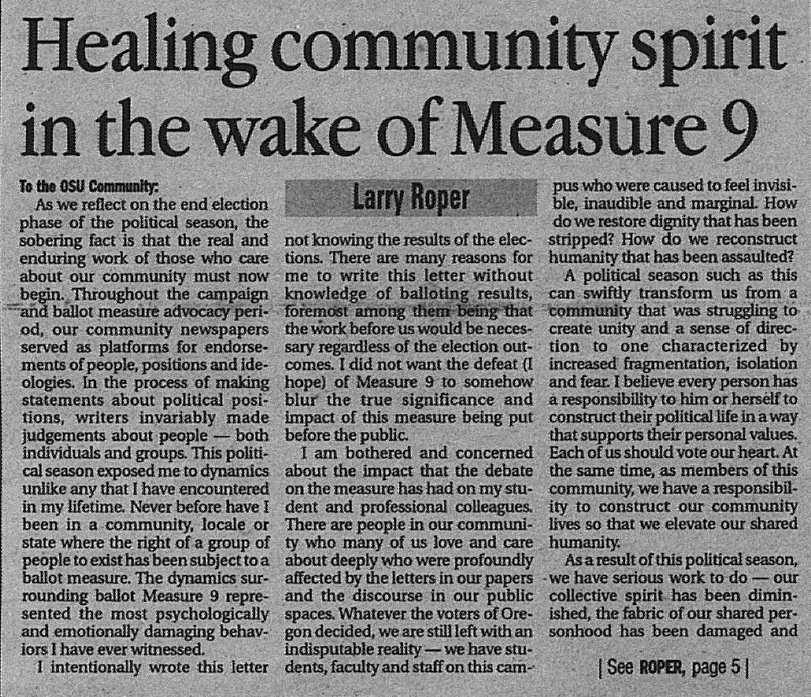

As we celebrate Queer History Month, we invite you to join us in remembering and exploring histories of queerness at OSU, in Corvallis, and throughout all of Oregon. Here at the OSU Queer Archives, we have been busy expanding our ‘LGBTQ+ Histories In OSU’s The Barometer’ collection to include articles published in The Barometer during the 2000s. Below is a brief reflection on a few chosen pieces of history that occurred during this time.
As the 2000s began, Oregon witnessed a continuation of the Oregon Citizens Alliance’s (OCA) efforts to pass queerphobic and transphobic ballot measures. The OCA sponsored Ballot Measure 9 aimed to prohibit all public educational institutions from ‘encouraging or sanctioning homosexuality’. The Measure would be successfully defeated as a result of a coordinated statewide campaign which included local activism by members of groups like No on 9 Mid Valley, and students from Linn Benton Community College and Corvallis High School. In a timely piece published in The Daily Barometer, Dr Larry Roper reflected on the emotional harm inflicted on community members as a result of the campaign surrounding the ballot measure, and asking ‘How do we restore dignity that has been stripped? How do we reconstruct the humanity that has been assaulted?’ These questions remain pertinent today as we continue to observe high rates of violence targeting trans and gender non-conforming people of color, as LGBTQ+ peoples’ federal legal rights to employment are under threat in the Supreme Court and as queer and trans students (especially those belonging to communities of color) face significant barriers in accessing the education they deserve at our institutions of higher learning. As we celebrate the resilience of those who struggled before us and those who continue to struggle this Queer History Month, perhaps we must also consider how we can build connections between our communities that sustain us and propel us toward healing and justice.
Amid a climate of hostility towards LGBTQ+ people on campus and in the community, this period also saw the emergence of demands for a Queer Resource Center by a coalition of activists representing organizations such as Rainbow Continuum, the Women’s Center, ASOSU Lesbian Gay Bisexual Task Force and Circle of Friends. Despite vocal opposition by the College Republicans and then Vice President of the ASOSU, this coalition would be successful in their fight to establish a resource center housed in the Women’s Center. In the year 2004, the center would be renamed the ‘Pride Center’ and would move to its own building located at 1553 SW ‘A’ Avenue where it continues to provide support for queer and trans folks today.
Below are PDFs of the articles, organized by year, with a table of contents for each set of articles. If you desire to see a physical copy, the newspaper is available in printed and bound copies, as well as on microfilm.
~ Aneeq Ahmed, OSQA Student Worker 2019-2020

